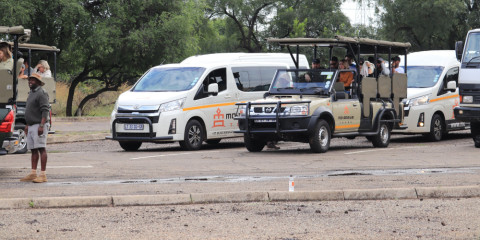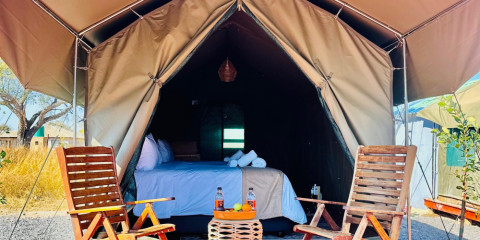Pilanesberg Game Reserve is the closest premier Big Five safari destination to Johannesburg. It has a lovely hilly setting in an ancient volcano and wildlife is plentiful, with white rhino and elephant being especially common. It is a relatively busy park, particularly over weekends when city dwellers head up for a bush break, so purists might feel it lacks wilderness appeal.

-
Best Time To Go
- May to September (Dry season)
-
High Season
- October to April (The park is busier, especially during school holidays)
-
Size
- 572km² / 221mi²
-
Altitude
-
1,020-1,608m /3,346-5,276ft
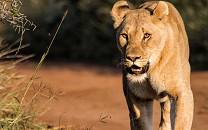 View Photos
View Photos
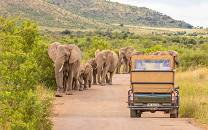 View Photos
+24
Photos
View Photos
+24
Photos
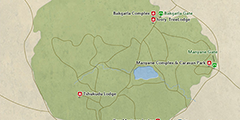 Open Map
Open Map
Pros & Cons
- Good wildlife viewing with all the Big Five present
- Beautiful scenery in the eroded remains of an ancient volcano
- Accommodations for all budgets, including self-catering
- Malaria-free
- Within three hours’ drive of Johannesburg and Pretoria
- Next to Sun City, a popular casino, entertainment and hotel complex
- Night drives can be very rewarding
- Excellent network of overlooking the
- Self-drive permitted
- Big cat sightings are hit-and-miss
- Special sightings can get very crowded
- Some roads are poorly maintained
Wildlife
Pilanesberg is home to the Big Five and offers good general wildlife viewing. Elephants are abundant and white rhinos are very common. All three of the big cats are present, but you will need some luck to spot them. You can also expect to see giraffe, zebra, wildebeest and many antelope species.
More about Pilanesberg’s wildlifeScenery
Pilanesberg is one of South Africa’s most picturesque safari destinations. The landscape is dominated by four concentric rings of hills, some of which rise 700m/2,300ft above the grassy valleys. This onion-like hill formation, referred to as an alkaline ring complex by geologists, was formed by volcanic activity roughly 1,500 million years ago. Mankwe Dam, in the center of the park, is a great place to see animals coming to drink at sunset.
Activities
All lodges offer guided in open 4x4 vehicles, with many including this activity in their package rate. It is also possible to self-drive (4x4 not required), ideally planning a route that allows you to spend time in a couple of the park’s excellent . Guided night drives are highly recommended and offer a fair chance of seeing leopard, brown hyena and other predators that are active at night. Hot-air balloon excursions, which depart before sunrise, offer wonderful panoramic views over the volcanically formed landscape.
Weather & Climate
Pilanesberg has a typically hot summer (October to April). But as this is the region’s Wet season, the heat tends to get softened by afternoon rains. Everything is reversed in the winter (May to September), which is the Dry season, when the rain vanishes along with the heat. In fact, it can get pretty cold when the sun disappears from the sky. The humidity stays low year-round.
More about the weather and climateBest Time To Visit
Pilanesberg offers good wildlife viewing throughout the year and there is no bad time to visit. The landscape is greenest during summer (October to April), which is also the Wet season. Weather is consistently sunny during the drier winter months (May to September), and wildlife is easier to spot then because the vegetation is less thick.
More about the best time to visit

